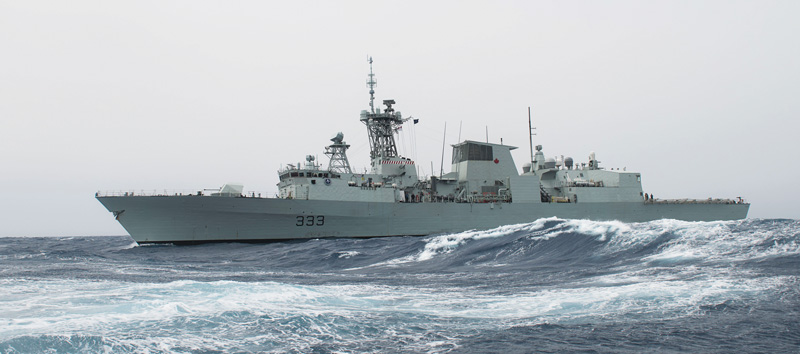Canada must contribute more to deterring military adventurism

The military world has changed rapidly over the past three decades.
Driven by the combined use of satellites, drones, computers, precision-guided munitions and other technologies, the change focused on the tactical side of war fighting. This was aptly described as a revolution in military affairs.
The changes were seen on battlefields in numerous small and not-so-small wars around the globe—in Iraq and Afghanistan particularly.
During that time, Canadian defence spending generally followed the pattern of other NATO members: as little as possible to keep Canada’s fighting forces fit for participation in these small wars.
General Rick Hillier, former chief of the defence staff, spoke of this period as switching from a focus on fighting the bear—the Soviet Union, then Russia—to fighting snakes—al-Qaida and the Taliban. Canada sent some 40,000 troops to Afghanistan over more than a decade with the main mission objective being to kill snakes.
We are now entering, or re-entering, a new era of great power competition. We hope we will never need to fight the bear or the dragon, but the “West” (NATO and Japan and Australia) will need to maintain forces that can, at the very least, deter military adventurism by our rivals.
For example, one of Canada’s main defence challenges today lies in Russian military expansion in the Arctic. It is doubtful there will ever be a war with Russia in the Arctic, but growing Russian military power in the North will enable the bear to impose its own rules in that region.
Canada is not prepared to play an influential role in this global return to great power competition. We are looking for second-hand aircraft to replace our current VIP and cargo transport planes. We are flying used F-18 fighters from Australia to supplement the almost 40-year-old CF-18 Hornets we started purchasing in the 1980s. Until, that is, Ottawa decides, as deliberately as possible, to replace all those old fighter jets with new ones.
The biggest issue we face is that our Halifax-class frigates need to keep sailing into the next decade, despite corrosion and metal fatigue. They were originally scheduled to be replaced in the next few years, but they now have to make do for another 10 years at least.
The cost to maintain them will skyrocket. And the potential cost of building 15 new frigates today (based on the British Type 26 frigate) is estimated at $213-219 billion. Combine that with completing two new navy ships for the Joint Support Ship Project and the total cost to refresh the RCN reaches $220 billion.
Combine these costs with other budget issues—such as insufficient personnel to cover all the operational needs of Canada’s military bases and the costs of the new fighter aircraft—and an enormous shortfall appears between what is needed to take all three services from where they are now to mere fighting strength.
Our prime military partner, the United States, has recognized the shift in international defence affairs. It is moving ahead with new long-range bombers and fighter aircraft to take its air force beyond the era of F-22s and F-35s. It is also procuring new and better equipment for its army and navy.
Canada has not recognized the shift—yet. But we have seen it before.
In 1950, Canada joined other nations in the Korean War. China entered that war in late November and appeared to be on the verge of pushing United Nations forces—led by the United States—off the Korean Peninsula.
Our security depends on us playing an appropriate role in this new great power competition.
In Ottawa and other Western capitals, the imminent defeat of UN forces in Korea led to alarm over the possibility that a communist country was about to vanquish the U.S. and its UN allies, setting the stage for much more aggressive communist action elsewhere.
The result was a massive increase in defence budgets across NATO. Ottawa’s defence spending increased some threefold over the next six years. Defence spending suddenly mattered in Ottawa, and Canadians somehow found a way to pay for plenty of new military hardware.
We are rapidly approaching a similar crunch. We are not and never will be a major military power. But our security depends on us playing an appropriate role in this new great power competition. To do that will cost a lot more, but we need to figure out how to accomplish it.
Advertisement













